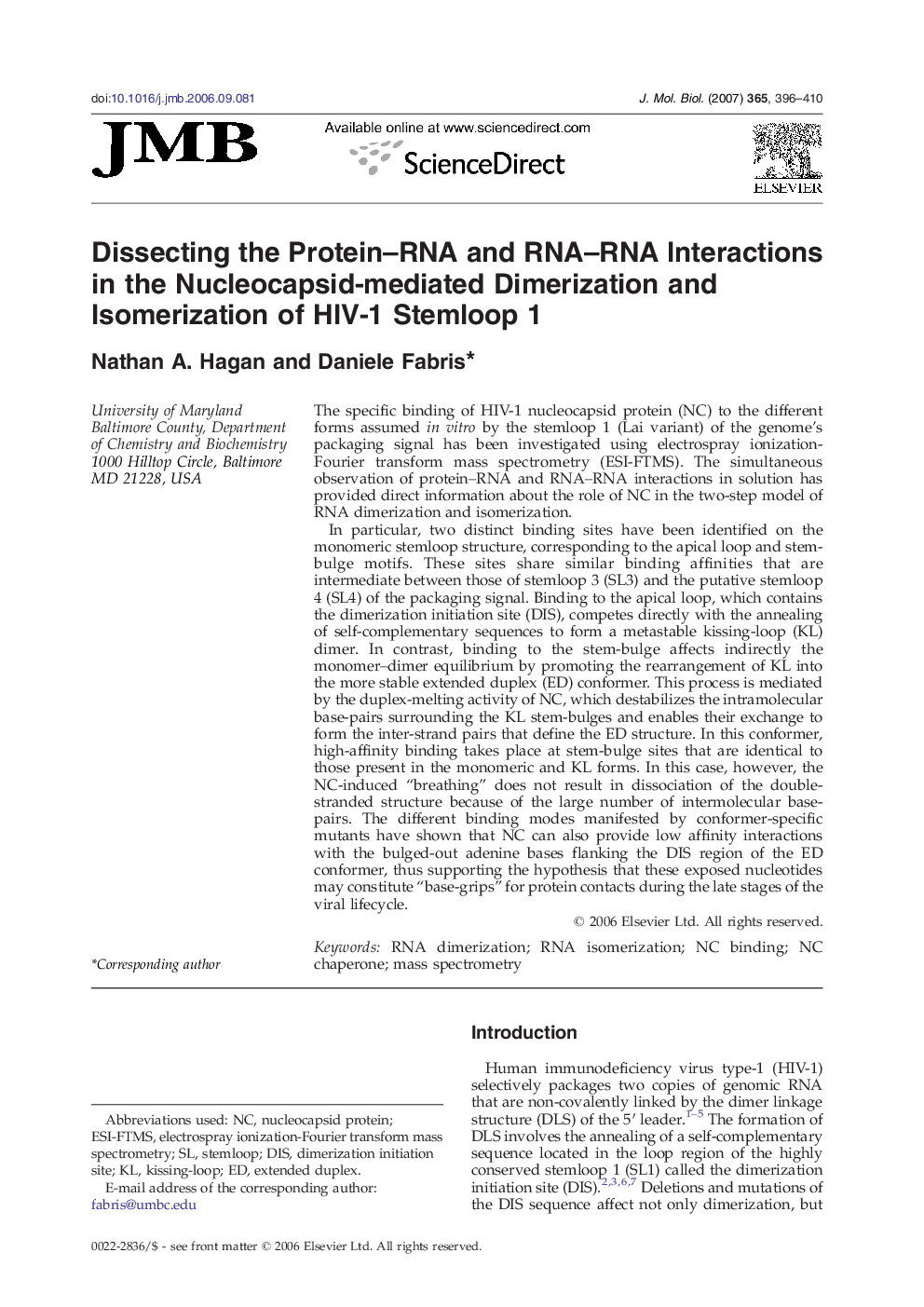| کد مقاله | کد نشریه | سال انتشار | مقاله انگلیسی | نسخه تمام متن |
|---|---|---|---|---|
| 2188561 | 1096176 | 2007 | 15 صفحه PDF | دانلود رایگان |

The specific binding of HIV-1 nucleocapsid protein (NC) to the different forms assumed in vitro by the stemloop 1 (Lai variant) of the genome's packaging signal has been investigated using electrospray ionization-Fourier transform mass spectrometry (ESI-FTMS). The simultaneous observation of protein–RNA and RNA–RNA interactions in solution has provided direct information about the role of NC in the two-step model of RNA dimerization and isomerization.In particular, two distinct binding sites have been identified on the monomeric stemloop structure, corresponding to the apical loop and stem-bulge motifs. These sites share similar binding affinities that are intermediate between those of stemloop 3 (SL3) and the putative stemloop 4 (SL4) of the packaging signal. Binding to the apical loop, which contains the dimerization initiation site (DIS), competes directly with the annealing of self-complementary sequences to form a metastable kissing-loop (KL) dimer. In contrast, binding to the stem-bulge affects indirectly the monomer–dimer equilibrium by promoting the rearrangement of KL into the more stable extended duplex (ED) conformer. This process is mediated by the duplex-melting activity of NC, which destabilizes the intramolecular base-pairs surrounding the KL stem-bulges and enables their exchange to form the inter-strand pairs that define the ED structure. In this conformer, high-affinity binding takes place at stem-bulge sites that are identical to those present in the monomeric and KL forms. In this case, however, the NC-induced “breathing” does not result in dissociation of the double-stranded structure because of the large number of intermolecular base-pairs. The different binding modes manifested by conformer-specific mutants have shown that NC can also provide low affinity interactions with the bulged-out adenine bases flanking the DIS region of the ED conformer, thus supporting the hypothesis that these exposed nucleotides may constitute “base-grips” for protein contacts during the late stages of the viral lifecycle.
Journal: Journal of Molecular Biology - Volume 365, Issue 2, 12 January 2007, Pages 396–410